Unveiling the Impact of Cockroaches on Disease Transmission and Public Health
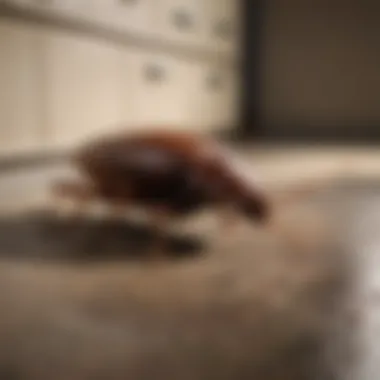

Animal Species Profile
Cockroaches, scientifically known as Blattodea, are insects characterized by their flat oval bodies, long antennae, and fast movements. These hardy creatures have thrived for millions of years in various habitats, showcasing remarkable adaptability. Cockroaches are commonly found in warm, dark, and moist environments such as kitchens, bathrooms, and basements. Their nocturnal behavior and scavenging nature contribute to their efficient foraging abilities.
Disease Transmission Dynamics
Cockroaches play a significant role in disease transmission due to their habits of feeding on decaying matter, including garbage, food scraps, and even feces. As they roam through unsanitary environments, they pick up pathogens like bacteria and viruses on their bodies and transport them to other surfaces. When humans come into contact with these contaminated surfaces or ingest food contaminated by cockroach excreta, they are at risk of contracting illnesses such as salmonellosis, cholera, and dysentery. Understanding the connection between cockroaches and disease transmission is crucial for effective pest management and public health protection.
Introduction
Overview of Cockroaches
Physical Characteristics
The physical characteristics of cockroaches serve as a key identifier and contribute significantly to their adaptation and survival in diverse environments. Their flattened bodies, coupled with long antennae and bristle-like projections on their legs, exemplify evolutionary traits that enhance their agility and ability to traverse various terrains effortlessly. These attributes not only aid in their locomotion but also play a crucial role in sensory perception, allowing them to navigate their surroundings with remarkable precision. The hard exoskeleton covering their bodies provides protection and structural support, underscoring their resilience in the face of environmental challenges.
Habitat and Behavior
Exploring the habitat and behavior of cockroaches unveils a fascinating insight into their adeptness at thriving in myriad settings. These nocturnal creatures exhibit a preference for warm, moist environments, seeking refuge in dark crevices and spaces close to food sources. Their omnivorous diet enables them to adapt to a wide range of food types, further enhancing their ability to survive in diverse habitats. Additionally, their gregarious nature fosters the formation of large populations, increasing the likelihood of infestations in human dwellings.
Significance of Studying Cockroaches
Impact on Public Health
The impact of cockroaches on public health transcends mere discomfort, as these insects serve as harbingers of bacterial, viral, and parasitic infections. Their presence in residential and commercial spaces can trigger allergic reactions in susceptible individuals while also contaminating food and surfaces with disease-causing pathogens. By shedding light on the health hazards associated with cockroaches, we can underscore the pressing need for proactive pest management strategies to mitigate the risks they pose.
Role in Disease Transmission
Cockroaches play a pivotal role in disease transmission by acting as mechanical vectors for an array of pathogens. Through their contact with filth and sewage, these insects inadvertently transfer disease-causing microbes to human-inhabited areas, amplifying the likelihood of infections. Their unique feeding habits, which involve regurgitation and defecation on food sources, further exacerbate the spread of pathogens, underscoring the critical need for stringent hygiene practices and pest control measures.
Diseases Associated with Cockroaches
Cockroaches play a significant role in disease transmission, making it crucial to understand the potential health risks they pose. By exploring the diseases associated with cockroaches, individuals can grasp the importance of controlling these pests to mitigate public health concerns. Bacterial, viral, and parasitic infections are among the key diseases linked to cockroach infestations.
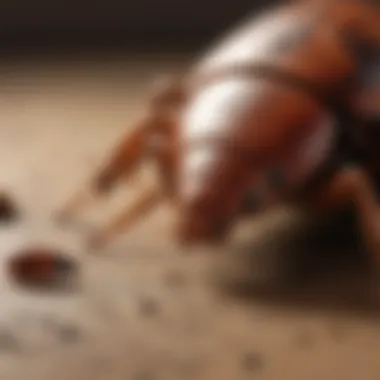

Bacterial Infections
Salmonella
Salmonella, a common bacterium carried by cockroaches, poses a substantial threat to human health. Its ability to survive in various environments allows for easy transmission through contaminated surfaces and food sources. Salmonella's resilient nature makes it a formidable opponent in the context of disease transmission, emphasizing the importance of addressing cockroach infestations promptly.
E. coli
Another prevalent bacterium associated with cockroaches is E. coli. This pathogen is known for causing severe gastrointestinal issues in humans and can be transmitted through multiple pathways. E. coli's adaptability and resistance make it a challenging component in the battle against cockroach-related diseases. Understanding the characteristics and behaviors of E. coli is crucial for effectively combatting its spread.
Viral Infections
Poliovirus
The presence of the poliovirus in cockroach populations signifies a concerning risk factor for disease transmission. This virus, known for causing polio, can have devastating effects on the nervous system. Cockroaches acting as carriers of the poliovirus highlight the intricate relationship between pests and viral infections, underscoring the need for vigilant pest control measures.
Hepatitis
Hepatitis, a group of viruses that affect liver function, can also be transmitted by cockroaches. The intricate mechanisms of hepatitis viruses amplify the challenges in controlling their spread. Recognizing the significance of hepatitis in the context of cockroach-related diseases is pivotal for devising effective prevention and eradication strategies.
Parasitic Infections
Protozoa
Protozoa are among the parasitic organisms that cockroaches can harbor, contributing to the complexity of disease transmission. These single-celled organisms can cause various ailments in humans upon ingestion or contact. Understanding the lifecycle and transmission patterns of protozoa facilitated by cockroaches is essential for implementing targeted pest management approaches.
Helminths
Cockroaches also play a role in spreading helminths, or parasitic worms, which can have detrimental impacts on human health. The resilience and adaptability of helminths allow for prolonged survival in diverse environments, complicating eradication efforts. Preventing the transmission of helminths via cockroaches necessitates a comprehensive pest control strategy tailored to address this specific threat.
Transmission Pathways
Transmission pathways play a crucial role in understanding how diseases spread through cockroaches. By examining the specific pathways through which these pests transmit diseases, we can better grasp the potential risks they pose to public health. Understanding the transmission pathways is essential for implementing effective control measures and minimizing the spread of infections. This section will delve into the intricate ways in which cockroaches contribute to the dissemination of various diseases.
Mechanical Transmission
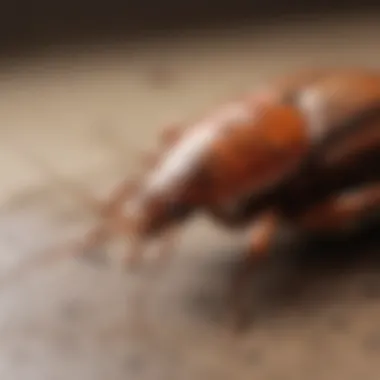
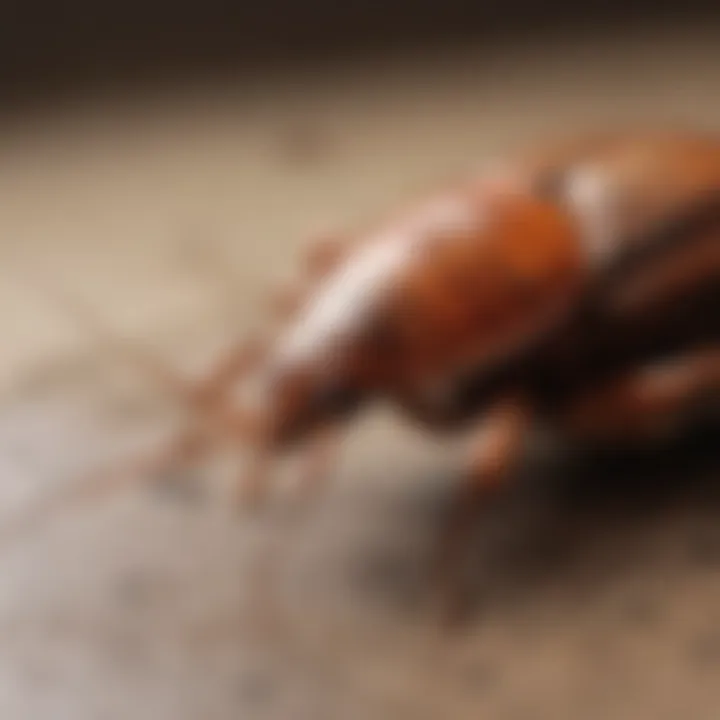
Mechanical transmission is a key aspect of how cockroaches facilitate the spread of diseases. Through contact with contaminated surfaces and food sources, these insects act as carriers for pathogens, such as bacteria and viruses, which can then be transferred to humans. Examining the mechanisms of mechanical transmission is paramount in devising strategies to prevent infections caused by cockroaches.
Contaminated Surfaces
Contaminated surfaces serve as breeding grounds for disease-causing microorganisms carried by cockroaches. These surfaces become reservoirs for pathogens, enabling the insects to pick up and transfer harmful bacteria and viruses as they crawl and feed. The persistence of pathogens on contaminated surfaces highlights the significant role of thorough sanitation practices in controlling cockroach-related illnesses.
Food and Water Sources
Food and water sources present ample opportunities for cockroaches to pick up pathogens and spread them to humans. By feeding on organic matter and accessing water reservoirs, cockroaches can contaminate these essential resources with bacteria and other disease-causing agents. Understanding the link between cockroaches, food, and water contamination is vital for mitigating the risks associated with these transmission pathways.
Biological Transmission
In addition to mechanical transmission, biological transmission also plays a significant role in the spread of diseases by cockroaches. Through regurgitation, feces, saliva, and body parts, these insects can introduce pathogens directly into their hosts, further complicating disease control efforts. Exploring the nuances of biological transmission provides crucial insights into the intricate relationship between cockroaches and disease transmission.
Regurgitation and Feces
The regurgitation and feces of cockroaches contain a cocktail of pathogens that can contaminate surfaces and food items. As these insects feed and digest, they inadvertently excrete disease-causing agents, amplifying the risk of infections. Understanding the implications of regurgitation and fecal contamination is essential for developing targeted pest control strategies.
Saliva and Body Parts
Cockroaches' saliva and body parts are additional vectors for transmitting pathogens to humans. Through grooming and feeding activities, these insects deposit infectious agents on various surfaces, increasing the likelihood of disease transmission. Examining the role of saliva and body parts in disseminating diseases underscores the importance of implementing comprehensive pest management practices.
Preventing Cockroach-Related Diseases
Sanitation Practices
Proper Food Storage
Discussing the importance of proper food storage is paramount in mitigating the risks associated with cockroach infestations. Proper food storage entails storing food in airtight containers to prevent contamination by cockroaches. This practice is crucial as it helps eliminate potential food sources for cockroaches, thereby reducing their presence and the likelihood of disease transmission. The unique feature of proper food storage lies in its ability to maintain food integrity and safety, ensuring that cockroaches cannot access or contaminate stored food items. While it requires diligence and organization, the benefits of proper food storage in preventing cockroach-related diseases are substantial, making it a recommended choice for effective pest control within the context of this article.
Regular Cleaning
Regular cleaning plays a vital role in preventing cockroach-related diseases by removing potential hiding spots and food debris that attract these pests. Through consistent cleaning practices, such as sweeping floors, wiping countertops, and eliminating clutter, the environment becomes less hospitable to cockroaches. The key characteristic of regular cleaning is its ability to disrupt the cockroaches' access to food and water sources, limiting their survival and reproduction. While the need for consistent cleaning may seem demanding, its advantages in reducing cockroach infestations and disease transmission risk are significant, making it a popular choice for maintaining a hygienic environment highlighted in this article.
Exclusion Methods
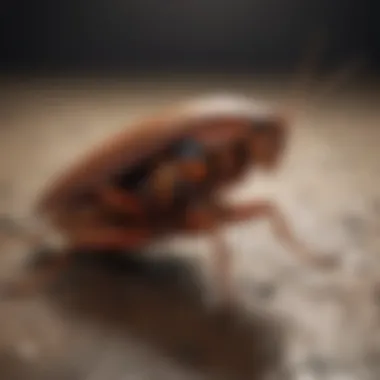
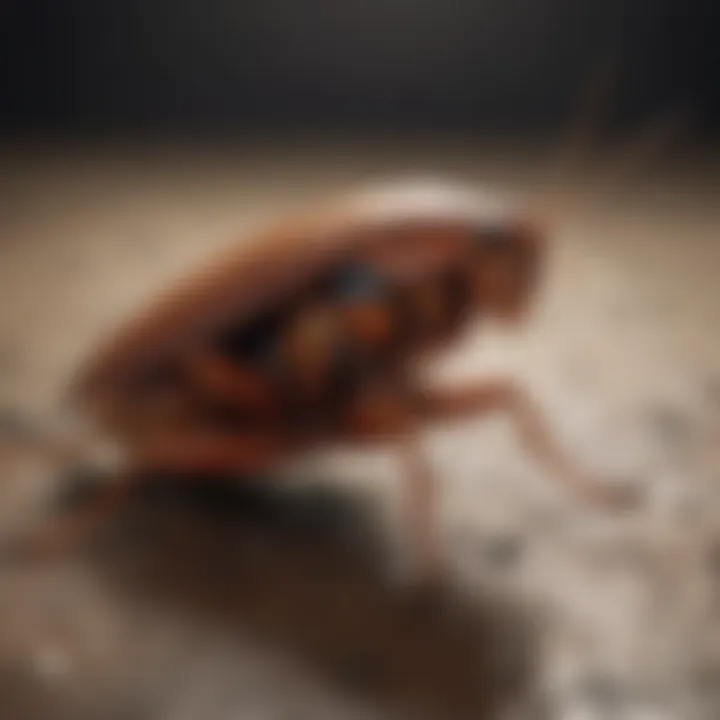
Sealing Entry Points
Addressing the issue of sealing entry points is essential in preventing cockroach infestations and associated disease risks. Sealing entry points involves closing off cracks, gaps, and openings that serve as entryways for cockroaches. This practice is beneficial as it helps create a barrier that restricts the insects' access to indoor spaces, reducing the chances of infestation and disease transmission. The unique feature of sealing entry points lies in its proactive approach to pest control, preventing initial intrusion and subsequent population growth. Although it demands thorough inspection and sealing, the advantages of this method in safeguarding against cockroaches and diseases make it a valuable choice within the context of this article.
Repairing Leaks
Highlighting the significance of repairing leaks contributes significantly to preventing cockroach-related diseases. Repairing leaks involves fixing any moisture sources, such as faulty pipes or faucets, that attract cockroaches seeking water. By addressing and rectifying these leaks, the environment becomes less conducive for cockroach survival, diminishing their presence and disease transmission potential. The key characteristic of repairing leaks is its effectiveness in mitigating conditions that support cockroach infestations, promoting a dry and inhospitable setting for these pests. Despite the need for timely repairs and maintenance, the advantages of this practice in preventing cockroach-related diseases are substantial, aligning it as a beneficial choice for effective pest management discussed in this article.
Professional Pest Control
Effective Treatments
Delving into the realm of effective treatments is essential for combating cockroach-related diseases through professional pest control services. Effective treatments involve applying targeted insecticides or baits to eliminate existing cockroach populations and prevent future infestations. This approach is beneficial as it addresses the root cause of the problem and offers long-term resilience against cockroaches and associated diseases. The unique feature of effective treatments lies in their tailored approach, customizing solutions based on infestation severity and environmental considerations. While professional pest control services may require investment and specialized knowledge, the advantages of effective treatments in eradicating cockroaches and reducing disease risks are significant, positioning them as a favorable choice within the scope of this article.
Regular Inspections
Emphasizing the importance of regular inspections is crucial in maintaining a vigilant stance against cockroach infestations and disease transmission. Regular inspections involve systematically assessing the premises for signs of cockroach activity and vulnerability points that require attention. This practice is beneficial as it allows for early detection of infestations, enabling prompt intervention to prevent the escalation of pest issues. The key characteristic of regular inspections is their proactive nature, identifying potential risks and implementing control measures before the situation deteriorates. While regular inspections necessitate consistency and thoroughness, the advantages of this practice in mitigating cockroach-related diseases and promoting long-term pest management are considerable, positioning it as a crucial choice for ensuring a pest-free environment discussed in this article.
Conclusion
Summary of Key Points
Cockroaches as Disease Vectors:
Exploring the role of cockroaches as disease vectors reveals a concerning reality. These resilient insects harbor pathogens like Salmonella, E. coli, Poliovirus, Hepatitis, Protozoa, and Helminths, making them potent carriers of diseases. Their presence in contaminated surfaces, food, and water sources facilitates the mechanical transmission of pathogens, highlighting the critical need for effective control measures.
Cockroaches' unique ability to transmit diseases through regurgitation, feces, saliva, and body parts underscores the urgency of addressing infestations promptly and comprehensively. Recognizing cockroaches as disease vectors elucidates the significant threat they pose to public health and underscores the necessity of vigilant pest management strategies.
Importance of Vigilance:
The emphasis on vigilance in addressing cockroach infestations cannot be understated. Maintaining high standards of hygiene, adopting proactive pest control practices, and promptly addressing any signs of infestation are crucial to prevent the proliferation of diseases carried by cockroaches. Vigilance serves as a cornerstone in disease prevention, empowering individuals to protect themselves and their environments from the potential health hazards associated with these pervasive insects.
Call to Action
Promoting Hygiene Practices:
Promoting hygiene practices stands as a fundamental step in mitigating the risks posed by cockroaches. Proper food storage, regular cleaning routines, and the elimination of conducive environments for cockroach infestations are paramount in reducing the likelihood of disease transmission. By promoting comprehensive hygiene practices, individuals can create inhospitable conditions for cockroaches, mitigating the associated health risks effectively.
Raising Awareness:
Raising awareness about the relationship between cockroaches and disease transmission is key to fostering community-wide efforts in pest control. Educating individuals about the health risks posed by cockroaches, the importance of early intervention, and the value of preventive measures can significantly impact public health outcomes. By raising awareness, communities can unite in implementing strategies to combat cockroach infestations, safeguarding individual and collective well-being.







